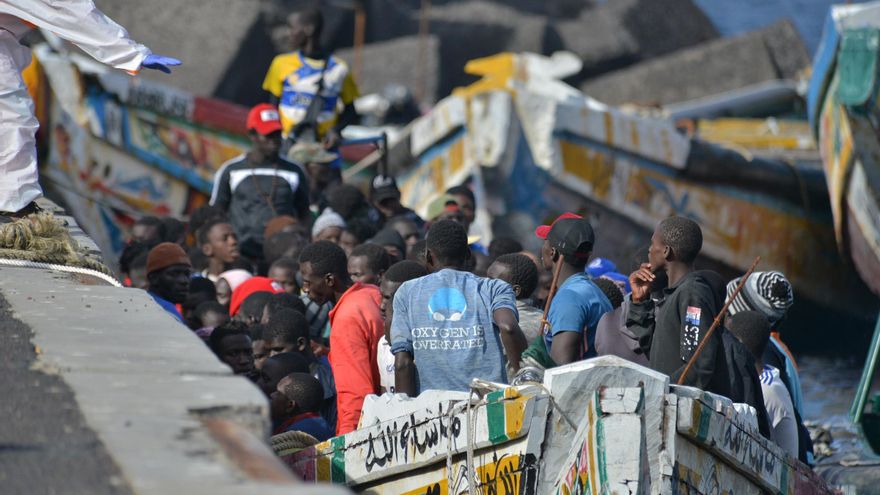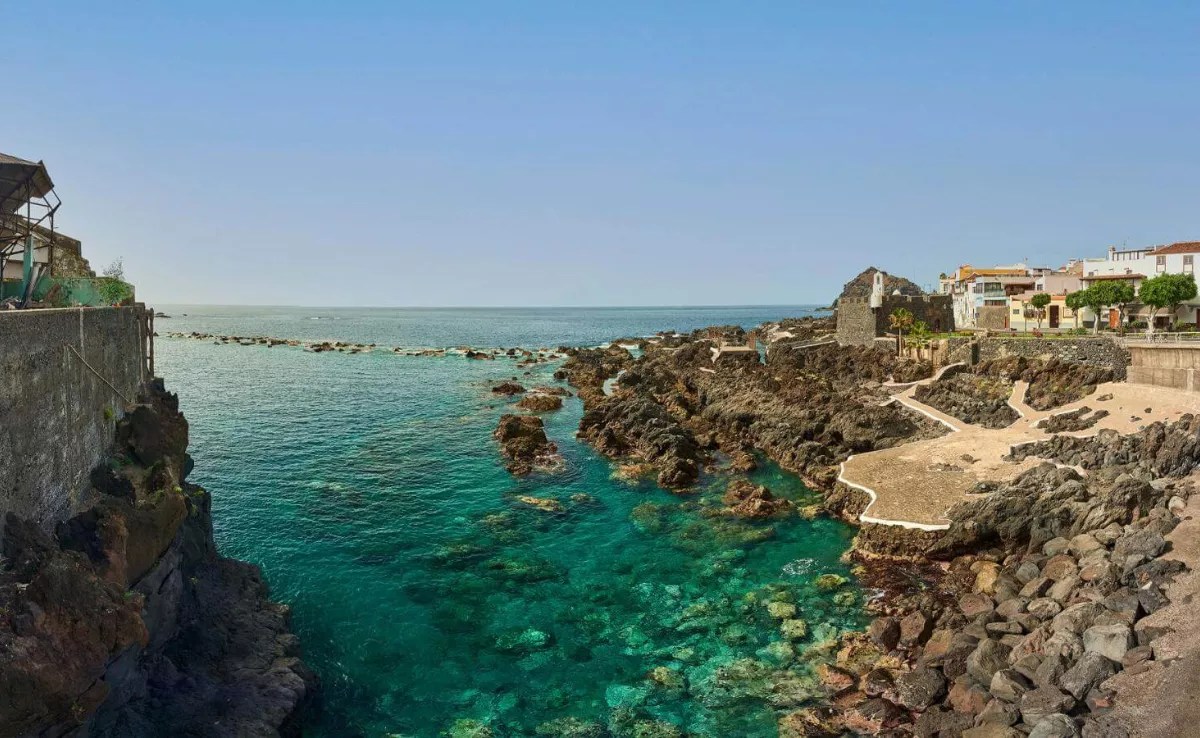
When the ferry you were on you move from Tenerife to El Hierro stops because it has come across a drifting canoe. There are passengers who get excited and want to help, but also those who look with disdain at its occupants and loudly blurt out comments like “throw them into the water and let’s continue.”
Martín Reyes lived that experience at the beginning of the month. This Early Childhood Education teacher tells EFE that the trip that began at 6:00 p.m. on the 11th with a half hour delay from the port of Los Cristianos, in the south of Tenerife, to spend a few days of vacation in El Hierro , it was “traumatic” for him.
In the company of Dianna Gómez, also a teacher, they boarded the Naviera Armas ferry and someone told them that on that same boat immigrants transferred to Tenerife from El Hierro had just arrived in Los Cristianos, since that island does not have the capacity to accommodate so many as they arrive, more than 5,000 so far this year, at that time.
Martín and Dianna, for whom the experience was “very hard”, did not see the migrants, but they were struck by the fact that the left side of the bow smelled strongly of bleach and was marked off with signs with generic messages, alluding to improvements in the service. .
They tried to sleep to avoid motion sickness on a trip that lasts about two and a half hours. After an hour, the boat slowed down and Martin opened his eyes to see many people looking outside.
The mother of a co-worker told her that they must be cetaceans, something that is not unusual on that route, but the ferry almost stopped, at which point another traveler pointed out that it must be a small boat.
Martín points out that the reactions of those traveling to El Hierro caught his attention, as there were those who took photos with their mobile phones, those who cried when they saw that about a hundred meters away there was a group of people in a canoe, two of them standing. , one in the bow and one in the stern.
The captain of the Armas ship explained over the public address system that the trip was not continuing because he was waiting for information from Maritime Rescue and, shortly after, he warned that we would have to wait between 45 and 50 minutes for the arrival of the rescue ship.
At those moments you don’t know if the canoe has stopped because its engine is broken, because it has run out of fuel, or because when it encountered a ferry its occupants considered that they had arrived; After the captain’s words there were “horrible reactions,” Dianna remembers.
Martín approached the stern to see the migrants better but the night prevented him from doing so, although the lights of some mobile phones could be seen and, at that moment, someone blurted out: “Throw them into the water and let’s continue.” There were 102 people, including 25 minors.
That’s why it was traumatic, explains Martín Reyes. “I made their experience my own without knowing if they were right or wrong,” confesses this teacher, who thought that these people had left their country on a boat risking their lives and, surely, many without knowing how to swim.
He insists that his reality is very far from the immigration that affects the islands and emphasizes that these are people who risk their lives and who sometimes charge up to 3,000 euros to escape, although he points out that it is possible that they have nothing to lose in their places of origin.
Dianna Gómez comments that, sometimes, the arrival of migrants is criticized because they are black. She thinks, in fact, that if the ferry had passed a drifting yacht that afternoon with four millionaires on board, there would have been no complaints.
He has questioned the fact that importance is given to issues that do not have it, such as migrants traveling with a mobile phone or taking photographs upon arrival, and has expressed the opinion that no one would see a problem with these same people if they were white and blonde.
Furthermore, he continues, the waiting time was the duration of an episode of a series, so if you open the tablet and play one, you no longer notice the delay.
Dianna admits that at some moments she felt shocked and did not know what to do, at the same time that she thought about her maternal family since her grandfather traveled from La Palma to Venezuela, where her mother was born, who has told her what she suffered when settling there. return to the Canary Islands.
The situation “overcame” him because he thought it was a matter of misinformation and ignorance of the other, says Dianna, who points out that she also has prejudices, but believes that the first thing should be to think about helping “and not about coming to spend a few days on vacation.” .
He insists that there were those who wanted to help some people whose bravery he highlighted, because he believes that you have to be brave to get on a canoe after collecting money that you don’t have, to go to a country where you don’t know what you will find. and in which you will not be accepted.
On the return trip they realized that the left side of the bow was limited to accommodate the adult migrants who were being transferred to Tenerife and they heard someone say: “That black man is sitting there and I don’t have a seat.”
And Martín Reyes and Dianna Gómez thought about whether anyone among the ferry passengers would also have been a migrant.
















